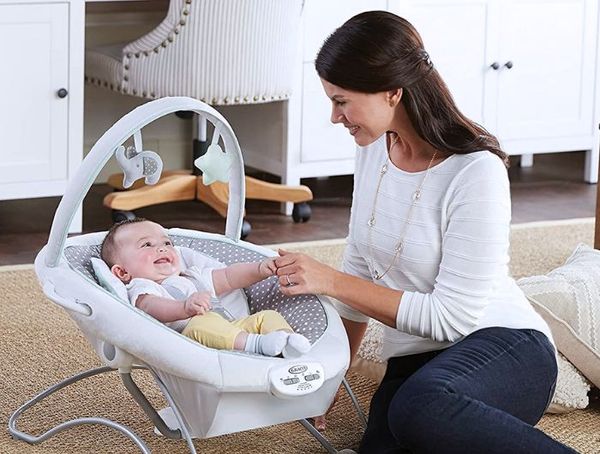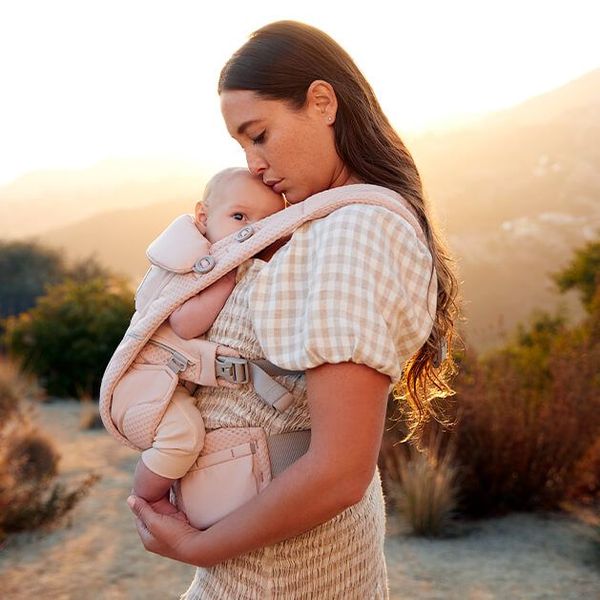Read on for more detailed instructions on how to use a baby swing safely.
Many new parents have concerns about the safety of infant swings, particularly when it comes to the issue of letting babies sleep in a swing. While a top baby swing can be a helpful tool for soothing and entertaining babies, there are some crucial safety tips to keep in mind.
In this blog post, we will answer some of the most common questions and concerns about the best baby swings, and share some tips on how to make them safer and more comfortable for your baby. Let's get started!
What Are The Benefits Of Baby Swings?
Baby swings are devices that rock or swing your baby in a gentle motion, usually with music, sounds, or toys to stimulate their senses. They can meet many needs and have many benefits for both you and your baby, such as:
They can calm and relax your baby, especially if they are fussy or colicky.
They can help your baby fall asleep faster and stay asleep longer.
They can provide your baby with some variety and stimulation during the day.
They can give you some time to rest, work, or do other things while your baby is safely occupied.
Discover the best infant swing for small spaces, designed to provide soothing comfort and entertainment for your baby without taking up too much room in your home.
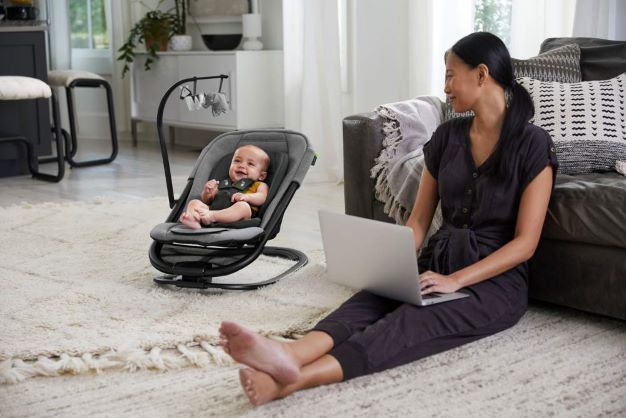
What Are The Risks Of Baby Swings?
One of the biggest safety concerns surrounding infant swings is the risk of sudden infant death syndrome (SIDS) or other sleep-related infant deaths. The American Academy of Pediatrics recommends that babies always sleep on a firm sleep surface, and never in car seats, an infant carrier, or swing.
The inclined position of a swing can make it difficult for a baby to breathe properly, particularly if their head slumps forward or to the side.
Baby swings are generally safe when used correctly and moderately, but they also have some potential risks that you should be aware of, such as:
- They can cause injuries or accidents if they are not stable, secure, or well-maintained.
- They can cause suffocation or strangulation if your baby is not strapped in properly or if there are loose or dangling cords or straps.
- They can cause flat head syndrome or plagiocephaly if your baby spends too much time in them without changing positions.
- They can interfere with your baby's development and bonding if they replace other activities such as tummy time, floor play, or cuddling.
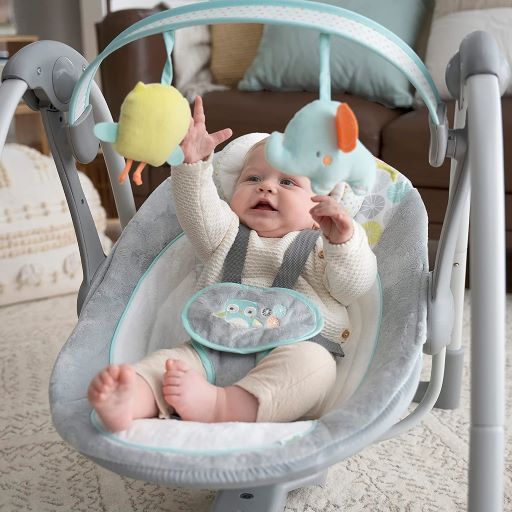
How Can You Use A Baby Swing Safely And Effectively?
Using a baby swing can be a great way to soothe and entertain your little one, but it’s important to follow some safety guidelines to prevent injuries or accidents. But first learn how to choose a baby swing. Here are some tips to keep in mind when using a baby swing:
Swing Safety
Before you use the swing, read and follow the manufacturer’s instructions and warnings carefully. They will tell you how to assemble, operate, and maintain the swing properly. Choose a safe location for the swing.
It should be on a flat and even surface, away from any potential hazards such as stairs, windows, doors, cords, or other objects that your baby could reach or fall onto.
Always secure your baby in the swing with the harness. Make sure it fits snugly and comfortably around your baby’s chest, waist, and crotch. Adjust the harness as your baby grows to prevent them from slipping out or getting tangled. Check the swing regularly for any signs of wear and tear or damage.
If you notice any cracks, loose parts, broken pieces, or frayed wires, stop using the swing and contact the manufacturer for a replacement or repair.
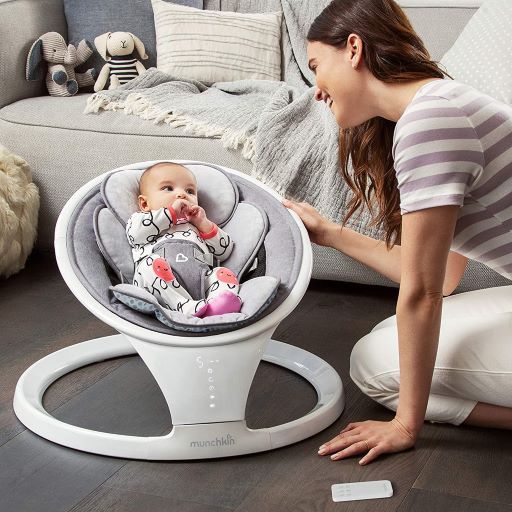
Supervised Fun
Never leave your baby alone in the swing. Even if they seem happy and content, they still need your attention and supervision. Don’t use the swing as a substitute for holding, feeding, changing, or comforting your baby. Avoid putting your baby in the swing when they are not in a good mood.
If they are full, hungry, wet, or sick, they may not enjoy the swing and may cry or spit up. Wait until they are calm and comfortable before placing them in the swing.
Don’t let your baby sleep in the swing! The swing is not designed for sleeping and may pose a risk of suffocation or strangulation. If your baby falls asleep in the swing, move them to a flat and firm surface such as a crib or bassinet as soon as possible.
Don’t use any extra items in the swing that could harm your baby. Blankets, pillows, toys, or other items could cover your baby’s face or restrict their movement and cause breathing problems or injuries. Only use the accessories that come with the swing or are approved by the manufacturer.
Limit your baby’s time in the swing to no more than 15 to 30 minutes per session and no more than 2 hours per day. Spending too much time in the swing could affect your baby’s development and health. They need variety and stimulation from other activities such as tummy time, floor play, or cuddling with you.
Alternate your baby’s position in the swing to prevent flat head syndrome or muscle stiffness. Change the direction of their head, the angle of their body, and the speed of their motion every time you use the swing. This will help them develop their neck and back muscles and avoid pressure on their skull.
To keep your sleeping baby safe in a swing, make sure to follow the manufacturer's weight limits and other safety instructions carefully. Never let your baby sleep in the swing unsupervised, and always make sure their head and neck are supported to prevent any breathing restrictions.
And remember that your baby's still-soft head needs to be protected by a flat and firm surface to prevent flat head syndrome.
Conclusion
Infant swings can be a helpful tool for soothing and entertaining babies, as long as you use them safely and conscientiously. If you have any concerns about whether a baby swing is right for your little one, be sure to consult with your pediatrician. By following baby swing safety tips and helping babies sleep safely, you can enjoy the many benefits of this popular baby gear item without any added anxiety or worry.
Thank you for reading Mother Bear Reviews, your favorite parenting blog!






